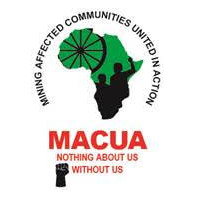Image credit: Anglo American
By Lindobuhle Nene
South Africa, a global platinum leader, stands at a pivotal juncture as it steers towards a greener energy landscape. The nation’s journey towards a just energy transition is fraught with challenges, particularly for marginalised and affected communities.
In Mokopane, Limpopo, home to the Mogalakwena Platinum Mine, Anglo-American’s strides in green hydrogen technology contrast sharply with the community’s exclusion from these developments. This disconnect underscores the risk of greenwashing and profit-driven motives overshadowing genuine community and just energy development.
Mining Affected Communities United in Action (MACUA) recently convened to voice grievances over the lack of consultation and equitable benefit distribution in Mokopane’s green hydrogen project. In the meeting, these communities lamented of several social and environmental impacts plaguing the community because of the mine.
Today, WMAO was hosting a workshop at Mapela Branch in Limpopo, within the Mogalakwena municipality. The focus of the sessions was to comprehensively understand the impacts of Green Hydrogen and its production.The workshop involved a review of projects outlined in the Social… pic.twitter.com/mcMVfVqpi0
— Mining Affected Communities United in Action (@macua_sa) March 8, 2024
The community expressed frustration over the lack of consultation and the clear absence of benefits. The mine’s lack of regard for genuine consultation with the community is alarmingly evident in its approach when it extended its operation to accommodate its new green hydrogen ambitions.
To achieve its goal the mine had to remove graves of some of the community members. For this harm, the community members say they were compensated with figures ranging from R2 000 to R15 000 while others state that they were never consulted at all.
These lasting inequalities continue to impact energy policies and practices in the post-apartheid era. This perpetuates historical injustices and excludes marginalised groups from taking part in the energy transition.
Is green hydrogen sustainable in Mokopane?
Green hydrogen is produced by electrolyzing water using renewable energy sources such as solar or wind power. This process results in the generation of hydrogen gas and oxygen, with no harmful emissions.
The preferred way to produce green hydrogen is via polymer electrolyte membrane (PEM) electrolysis, which relies on an iridium and platinum-based catalyst. PEM technology has a higher power density, higher capacity and quicker start-up times than other electrolysis methods.
However, platinum ore, which is only found deep inside the crust of the earth, causes damage to the water systems and the air quality around the mine. Mokopane is an area troubled by water scarcity.
The community expressed frustration over the lack of consultation and the clear absence of benefits. The mine’s lack of regard for genuine consultation with the community is alarmingly evident in its approach when it extended its operation to accommodate its new green hydrogen ambitions.
To achieve its goal the mine had to remove graves of some of the community members. For this harm, the community members say they were compensated with figures ranging from R2 000 to R15 000 while others state that they were never consulted at all.
These lasting inequalities continue to impact energy policies and practices in the post-apartheid era. This perpetuates historical injustices and excludes marginalised groups from taking part in the energy transition.
Is green hydrogen sustainable in Mokopane?
Green hydrogen is produced by electrolyzing water using renewable energy sources such as solar or wind power. This process results in the generation of hydrogen gas and oxygen, with no harmful emissions.
The preferred way to produce green hydrogen is via polymer electrolyte membrane (PEM) electrolysis, which relies on an iridium and platinum-based catalyst. PEM technology has a higher power density, higher capacity and quicker start-up times than other electrolysis methods.
However, platinum ore, which is only found deep inside the crust of the earth, causes damage to the water systems and the air quality around the mine. Mokopane is an area troubled by water scarcity.
The failure of Anglo to fulfil commitments outlined in the SLP exacerbates community frustration as infrastructure and clean water projects remain unrealised, while profits seem to accrue.
The community feels left in the dark, unsure of where to turn for information or how to address their grievances. The unfulfilled promises and unattended concerns only serve to deepen the growing frustration.
So, what should be done?
To rectify this situation and bring about justice, transparent communication channels must be established. These channels should ensure that community members informed and provide consent on the implementation of projects outlined in the SLPs.
Moreover, the mine must actively engage with the community to address concerns and seek solutions to issues such as water scarcity. Additionally, efforts should be made to provide employment and skill development opportunities, empowering community members and fostering economic growth.
Collaboration between the mine and the community, grounded in trust and inclusivity, is a crucial component in realising a Just Energy Transition. By considering the community’s input and working together to establish sustainable solutions, a truly different reality can be forged.
With the continued development and adoption of green hydrogen technology, the mining industry can achieve both economic prosperity and environmental sustainability. It is imperative for industry stakeholders, governments, and communities to collaborate in harnessing the potential of green hydrogen and maximizing the wealth derived from mineral resources.
*All images, except the feature image, were taken by Lindobuhle Nene
The post Mogalakwena Platinum Mine: a just transition project marred by community exclusion and unjustness first appeared on MACUA.






